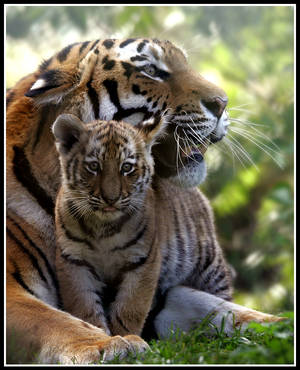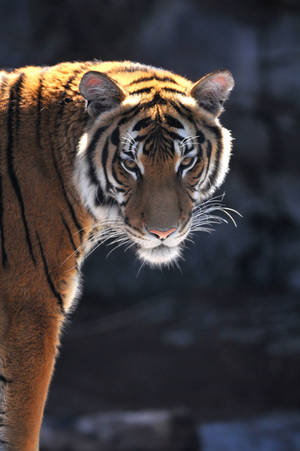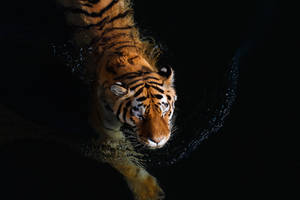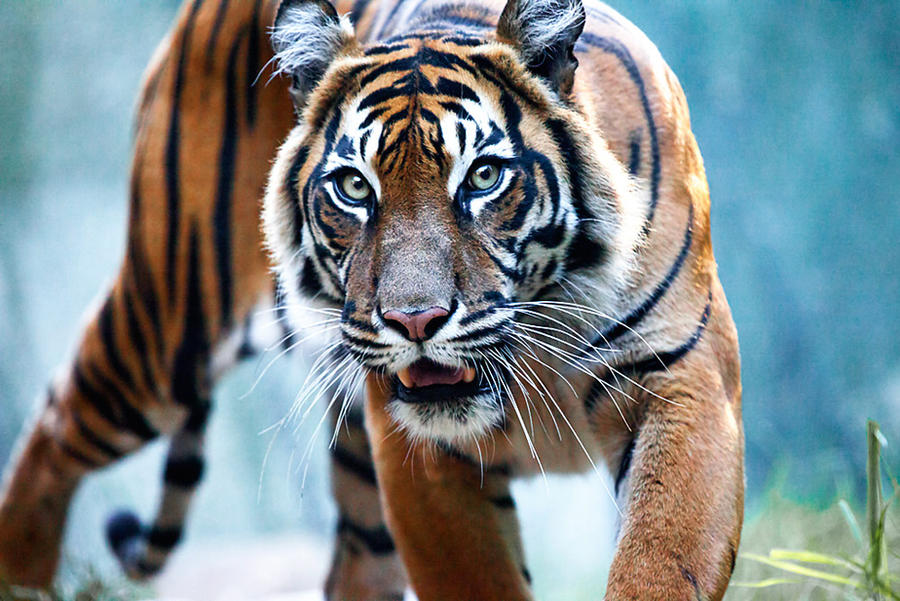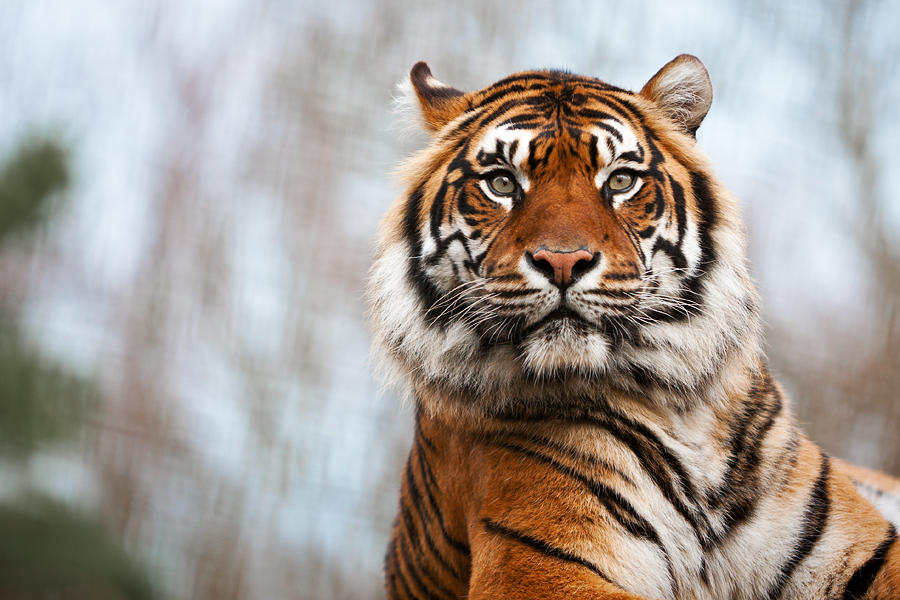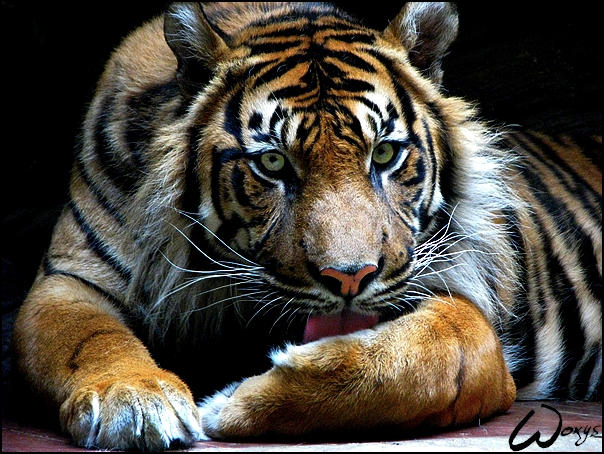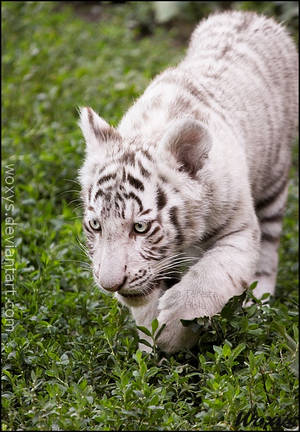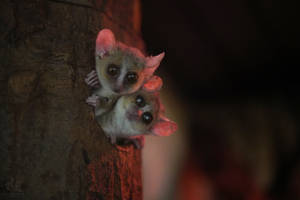They are and have always been very popular in human culture, occurring in mythology and folklore and currently in films, literature and sports. They're often connected to symbols of strength, due to their powerful physique and striking looks.
These days we recognize six livingTiger subspecies; the Bengal or Indian Tiger, the Indochinese or Corbett's Tiger, the Malayan Tiger, the Siberian or Amur Tiger, the South China, Amoy or Xiamen Tiger and the Sumatran Tiger. They all range from being Endangered, to Critically Endangered; their survival in the wild is constantly at risk.
The Bengal Tiger is the most numerous of the Tiger subspecies, though this is relatively speaking as by 2011, the total population was estimated at fewer than 2,500 individuals and decreasing. None of the Tiger Conservation Landscapes within the Bengal Tiger's range is considered large enough to support an effective population size of 250 individuals.
Their coats range from yellow to light orange, with stripes ranging from dark brown to black. The interior parts of the limbs are white, and the tail is orange with black rings.
It's in Bengal Tigers where one can find the well-known allele that produces the infamous White Tiger, estimated to be found in one in 10,000 births.
Genetically, whiteness is recessive: a cub is white only when both parents carry the allele. It is not albinism though; pigment being evident in the black stripes, and blue eyes. They are most notably found in captivity, where they were considered an oddity - and oddity sells for big money.
However, the small gene pool has lead to inbreeding; White Tigers these days are often born with physical defects and won't live as long as their orange counterparts.
Another recessive gene occurring mostly in Bengal Tigers, creates the golden, golden tabby or strawberry color variation. They have thicker fur, pale legs and faint orange stripes. At times, they may even produce stripeless white offspring.
In 2010, awareness was brought to the Indochinese Tiger, when the population had fallen more than 70% in just over a decade. Six countries, forming the largest combined area of tiger habitat in the world, are the home of about 350 Tigers.
They are smaller than Bengal and Siberian Tigers, with smaller heads, and a ground coloration that is darker, with more rather short and narrow single stripes.
Of all tigers, they are the least represented in captivity, and not part of a coordinated breeding program.
The Malayan Tiger is thought to count 250 to 340 individuals, a population that comprises less than 250 mature breeding individuals with a declining trend.
When comparing a Malayan and Indochinese Tiger cranially or in pelage, there are no clear differences. Even their habitats are in such close proximity, one dares not guess where one habitat ends and another begins. Malayan Tigers do appear smaller than Bengals.
The Siberian Tiger has known a stable population due to intensive conservation efforts, but they are not yet out of the woods.
Together with the Bengal Tigers, the Amurs are ranked among the biggest living cats. Todays wild Amurs are however smaller than Bengals.
Their fur is reddish-rusty or rusty-yellow in coloor, with narrow black transverse stripes. It has an extended supple body standing on rather short legs, with a fairly long tail.
The South China Tiger has long been hunted as a pest. in the early 1950s, they were estimated to number 4,000 individuals, which was when the killing started. In 1979, the Chinese government banned hunting; by 1996, the population was estimated to be just 30-80 individuals.
As it hasn't been sighted in the wild for more than 25 years, they are considered to be functionally extinct.
As its name suggests, the Sumatran Tiger can only be found on Sumatra. They are the smallest surviving tiger subspecies, and are distinguishes by heavy black stripes on their orange coats.
They are the last of Indonesia's Tigers - the Javan and Bali Tiger already having gone extinct - and are estimated at 400 individuals.
The Indonesian government has put serious jail time and steep fines on anyone caught hunting tigers, but the increasing demand for Tiger products seems to be worth the risk as Sumatran Tigers are fighting to survive.
Threats
Tigers are being threatened by habitat loss; the development of the countries they roam is speeding up, meaning forests disappear, roads are being constructed and the habitats fragmented. This forces the Tigers that are left into scattered, small refuges, which isolates populations and increases accessibilty for poachers.Most of the Tigers habitats are near densely populated areas where co-habiting with humans is not easy, as Tigers tend to hold large territories and human populations are expanding into the forests. Due to their close living situations with humans, human-tiger conflicts may also escalate.
The largest threat comes from the illegal trade in poached skins and body parts between India, Nepal and China. But also the rising demand for exotic wild meat in restaurants.
Siberian Tigers especially are known to have suffered from the bad weather, having to deal with bad snow storms at cold winters at times, which has impacted the population.
They have also been known to stay in their own region, instead of moving across the development border, seperating two populations and risking a lack of genetic diversity.
Conservation efforts
Organizations are striving to enforce zero tolerance for tiger poaching across Asia. They help to create dedicated enforcement units in each landscape, and install the best new technologies to help local agencies achieve maximum results.They invest in stronger law enforcement by improving the effectiveness of wildlife rangers, training personnel from enforcement agencies and empowering community patrols and enforcement networks.
Tiger habitats, prey and population numbers are being identified through extensive research and surveys. Organizations are working to improve habitat conditions so that both tigers and their prey populations will naturally increase.
Organizations are actively seeking the establishment of formal protection in areas where Tigers are found and still lack effective protection. They strive to establish special Tiger Landscape, where the animals can live safely.
Organizations help to design land-use plans that incorporate critical wildlife habitat. Districts and provincial governments are integrating this information into their plans, including zoning decisions and concessions for economic activities. Along with organizations efforts to mitigate the palm, pulp and paper, and timber industries' impact on Asia's (especially island) biodiversity, this work helps to balance environmental realities with people's social and economic needs.
Good news
In Omaha's Henry Doorly Zoo and Aquarium, 3 Amur Tiger cubs were born on June 7. First time mom Isabella is doing an amazing job at taking care of the two males and one female.ZSL London Zoo welcomed twin Sumantran cubs to the world on June 27th. Mother Melati took her babies outside with her fairly soon, allowing zookeepers and the occasional lucky visitor glimpses of the young cubs.
On January 6, two Malayan Tigers were born at Virgina Zoo. The cubs were born 12 hours apart, and after a couple of hours of observation, keepers were not happy with the level of care first-time mom Api was showing her offspring. After much discussion, they made the tough decision to remove them from their mother to hand-rear them.
Source: ZooBorns: Critically Endangered Tiger Brothers at the Virginia Zoo and ZooBorns: Virgina Zoo is Naming their Tiger Cubs
Read more about it:
World Wildlife: South China Tiger
World Wildlife: Sumatran Tiger
World Wildlife: Indochinese Tiger
Wikipedia: Tiger
World Wildlife: Sumatran Tiger
World Wildlife: Indochinese Tiger
Wikipedia: Tiger


